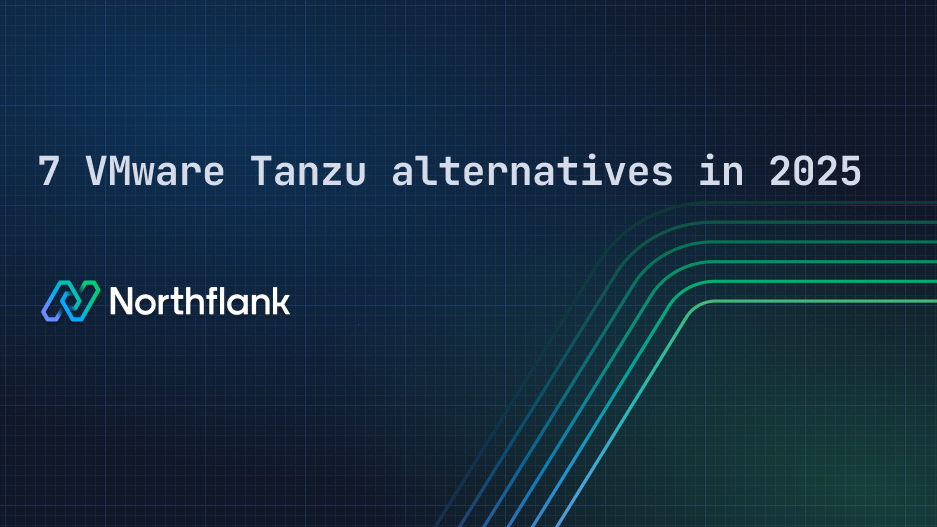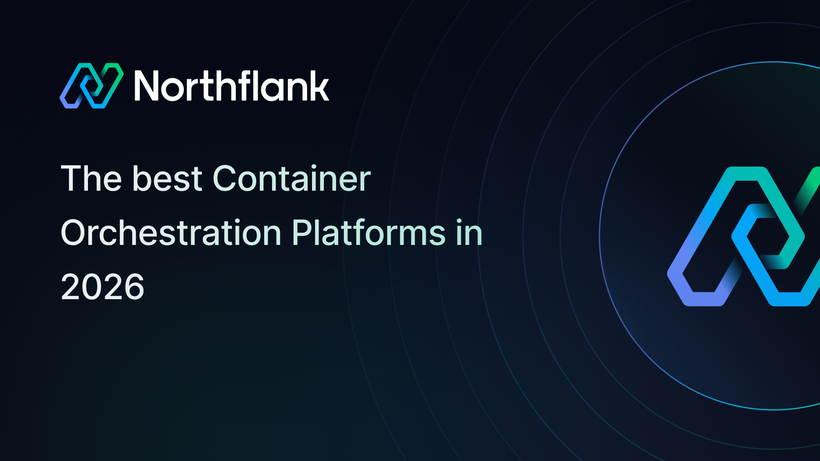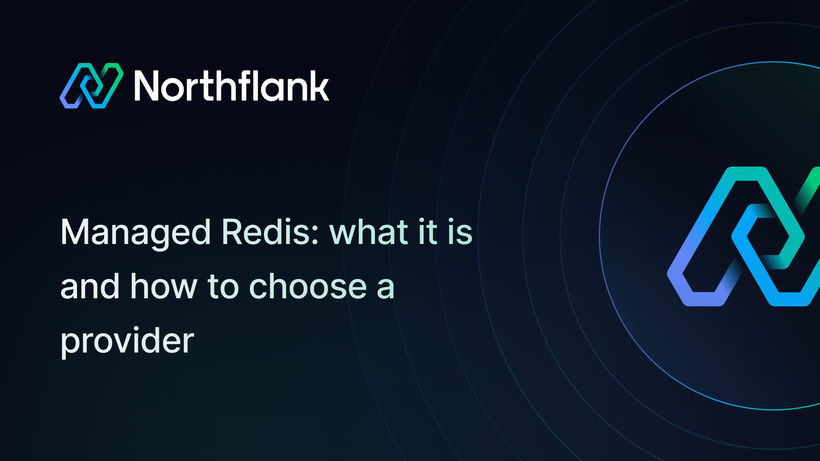

7 Top VMware Tanzu alternatives for DevOps in 2025
If you've ever tried to wrangle VMware Tanzu into shape, you probably understand the pain of over-complication. It’s powerful, sure, but it’s also sprawling, complex, and often better suited for enterprise-scale teams with dedicated platform engineers. For many developers and DevOps teams, Tanzu feels like using a sledgehammer to hang a picture frame.
As we head deeper into 2025, there's a noticeable shift: teams are looking for lightweight, developer-friendly platforms that still deliver powerful Kubernetes orchestration, automation, and scalability but without the heavy overhead.
In this article, we’ll explore what the developer community is saying about VMware Tanzu, what to look for in an alternative, and introduce seven platforms that are gaining momentum, especially Northflank, which is becoming a favorite for teams that want speed without compromise.
Here are the top VMware Tanzu alternatives developers are turning to this year:
- Northflank – Dev-first Kubernetes platform with built-in CI, database hosting, and automatic deployments.
- Platform.sh – Application-centric PaaS focused on Git-based workflows.
- Red Hat OpenShift – Enterprise-grade Kubernetes platform with strong hybrid cloud and security features.
- Platform9 – SaaS-managed Kubernetes with a focus on hybrid and edge deployments.
- Portainer – Lightweight container management tool with a focus on simplicity.
- Rancher – Enterprise-grade Kubernetes management, still lighter than Tanzu.
- Dokku – Minimalist, self-hosted PaaS for smaller-scale deployments.
If you follow developer discussions on forums like Reddit, Hacker News, or X, the consensus on VMware Tanzu is mixed. Here’s a snapshot of what people are saying:
“Great for large enterprises that are already committed to VMware. But it’s way too complex and pricey for smaller teams.”
“Integration with vSphere is seamless, but Tanzu still feels like it's in beta—documentation could definitely be better.”
“Love the idea, but licensing is a nightmare. I’m constantly trying to figure out what’s included and what’s not.”
There are definitely some recurring themes. Many developers find Tanzu’s integration with VMware products to be a major selling point for large-scale environments, but there’s also frustration over the complexity and steep learning curve. On Reddit, users shared concerns like:
“Do I really need Tanzu if I just want to manage Kubernetes clusters?”
“Trying to get pricing info was like pulling teeth. It’s almost like they don’t want you to know.”
“Good concept, but for the price, I’d rather just use Rancher and save the headache.”
Ultimately, VMware Tanzu is a mixed bag. While it's perfect for large companies already using VMware infrastructure, smaller teams are still left scratching their heads over pricing, complexity, and whether it’s worth the cost.
You can read the original thread on Reddit here.
Choosing a VMware Tanzu alternative isn’t just about cutting costs or reducing complexity—it’s about finding a platform that aligns with how your team actually builds and ships software. Tanzu is powerful, but for many teams, it introduces friction: too much overhead, too many moving parts, and too steep a learning curve.
A good alternative should offer Kubernetes where it makes sense and get out of the way where it doesn’t.
Key features to look for:
- Native Kubernetes support – Kubernetes is the standard, but not everyone wants to write YAML or manage clusters manually. Look for platforms like Northflank that offer Kubernetes under the hood, with smart abstractions that let developers focus on code, not container orchestration.
- Built-in CI/CD pipelines – Integration with your Git provider and automated pipelines should be table stakes. You shouldn’t need to duct tape a CI system to your deployment process just to push an update.
- First-class database and service orchestration – A modern platform should handle not just code, but the services around it: managed databases, queues, workers, cron jobs. These should be built-in, not bolt-ons.
- Git-based workflows – The best platforms treat Git as the source of truth. Whether it’s deploying on push, spinning up preview environments, or rolling back via commits, Git should drive the workflow.
- Effortless scalability – Whether you're scaling up for a product launch or spinning down idle services, your platform should adapt without requiring hands-on tuning of autoscalers or node pools.
- Integrated observability – Logs, metrics, and alerts should be baked in. You shouldn’t have to juggle third-party tools to understand what’s happening in production.
- Sane, secure defaults – From day one, you should be able to deploy a service securely, with automatic HTTPS, secrets management, and role-based access control in place. The platform should help you follow best practices without making it feel like a chore.
Northflank is what Tanzu wants to be for developers. It gives you all the power of Kubernetes—container orchestration, service discovery, and autoscaling—but wraps it in a developer-first experience.
No need to manage YAML files by hand. With Git-integrated workflows, built-in CI, automatic SSL, and managed databases, Northflank helps you go from code to running service in minutes. It also handles the heavy lifting like horizontal scaling, persistent storage, and background workers with a clean, intuitive UI and APIs.

Key features:
- Kubernetes-powered, full-stack platform
- Deploy containers, databases, and scheduled jobs
- Bring your own cloud (AWS, GCP, Azure, etc.)
- CI/CD integration, real-time logs, with a developer-friendly and consistent experience across UI, CLI, API, and GitOps
- GPU support for AI workloads
- Automatic preview environments and seamless promotion to dev, staging, and production
Best for:
- Dev teams building APIs, microservices, and containerized web apps
- SaaS products needing multi-service architectures
- Teams looking for a fast, clean alternative to older, more rigid platforms like Tanzu
Potential drawbacks:
- Highly experienced DevOps teams might find it restrictive compared to directly managing raw Kubernetes clusters. It’s a fine balance between ease of use, flexibility, and customization; that line differs for every organization.
- Less established compared to legacy platforms like VMware tanzu or Rancher.
See how Weights company uses Northflank to scale to millions of users without a DevOps team
Platform.sh is a PaaS focused on Git-based environments. Every Git branch can spin up its own isolated infrastructure, making it a great choice for teams that prioritize preview environments, testing workflows, and automation.

Key features:
- Git-driven infrastructure with instant preview environments.
- Integrated CI/CD and environment cloning.
- Supports a wide range of runtimes (PHP, Python, Node.js, etc.).
- Multi-cloud deployment options.
Best for:
Agencies and teams managing multiple application versions in parallel, especially with PHP-heavy stacks.
Potential drawbacks:
- Less Kubernetes-native than other options.
- Limited flexibility for custom orchestration.
OpenShift is a comprehensive Kubernetes platform developed by Red Hat. It’s designed for hybrid and multi-cloud deployments, offering strong security, compliance features, and enterprise support.

Key features:
- Full-stack Kubernetes with integrated developer tools.
- Native CI/CD with Tekton and support for pipelines.
- Robust RBAC, policy enforcement, and compliance capabilities.
- Deep integration with Red Hat Linux and other enterprise tools.
Best for:
Large enterprises already invested in Red Hat infrastructure or needing high-security, compliance-ready Kubernetes environments.
Potential drawbacks:
- Complex to set up and maintain without dedicated platform teams.
- Can be resource-intensive and expensive.
Platform9 is a managed Kubernetes solution designed for on-premises, edge, and hybrid cloud environments. Unlike fully cloud-hosted Kubernetes services, Platform9 allows organizations to run Kubernetes anywhere while benefiting from a SaaS-based management model.

Key features:
- Fully managed Kubernetes with a 99.9% uptime SLA.
- Works across on-prem, hybrid, and edge environments.
- Zero-touch upgrades and automated operations.
- Open-source foundation with no vendor lock-in.
Potential drawbacks:
- Smaller market share compared to OpenShift, which may affect long-term support.
- Reliance on a SaaS-based model may not be suitable for some enterprises.
Portainer is a lightweight container management UI for Docker and Kubernetes environments. It’s not a full-fledged platform like others here, but it offers a user-friendly way to manage container infrastructure visually.

Key features:
- Simple dashboard for managing containers and clusters.
- Works with both Docker and Kubernetes.
- Role-based access control and team management.
- Minimal resource requirements.
Best for:
Self-hosters and small teams that want a visual layer over their existing container infrastructure.
Potential drawbacks:
- Lacks deeper DevOps features like CI/CD or GitOps.
- Not intended for large-scale enterprise workloads.
Rancher is an open-source Kubernetes platform that simplifies cluster provisioning, monitoring, and governance. It supports multi-cluster setups and works well for organizations looking for an open solution that avoids vendor lock-in.

Key features:
- Centralized management of multiple Kubernetes clusters.
- Role-based access control and user authentication.
- Compatible with any certified Kubernetes distribution.
- Fully open-source and extensible.
Best for:
Enterprises and platform teams that want to retain full control of Kubernetes infrastructure without VMware or cloud vendor lock-in.
Potential drawbacks:
- More focused on operations than developer workflows.
- Requires some Kubernetes expertise to operate effectively.
Dokku is a minimal, open-source PaaS that acts like a lightweight version of Heroku. It’s designed for developers who want to deploy apps easily on their own servers using Git.

Key features:
- Simple, Git-push deployments for web apps.
- Plugin ecosystem for databases, SSL, and more.
- Very low system requirements.
- Full control over infrastructure.
Best for:
Tinkerers, indie developers, and small apps with simple deployment needs.
Potential drawbacks:
- Not suitable for complex or large-scale applications.
- Limited scalability and enterprise-grade features.
Start with your team’s real needs, not what sounds good in a cloud keynote.
Ask:
- Do we want to manage Kubernetes directly or abstract it?
- How much of our deployment pipeline do we want handled for us?
- Do we need managed databases or will we bring our own?
- How important is pricing transparency and cost control?
If you’re a developer or DevOps team that wants to deploy quickly, scale automatically, and focus on product, not platform plumbing, then a tool like Northflank hits the sweet spot. It’s built with modern workflows in mind and removes the friction that tools like Tanzu often introduce.
VMware Tanzu will always have a place in large enterprise environments, but 2025 is clearly the year of simplified platforms that give developers more power with less overhead. Whether you're a startup, a growing SaaS team, or a solo dev, there's a Tanzu alternative that fits your stack and your workflow.
Among them, Northflank is emerging as the most developer-aligned option: clean interface, smart defaults, full Kubernetes power under the hood, and no need to hire a platform team to make it work.



